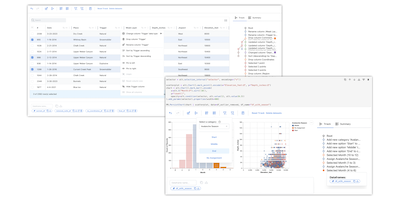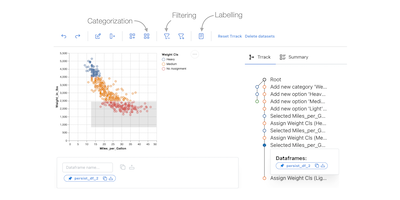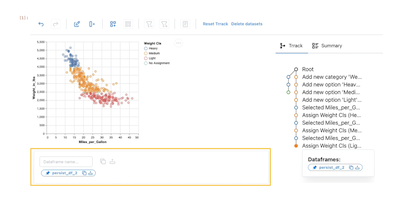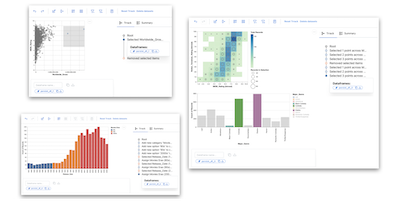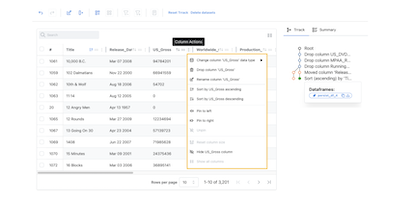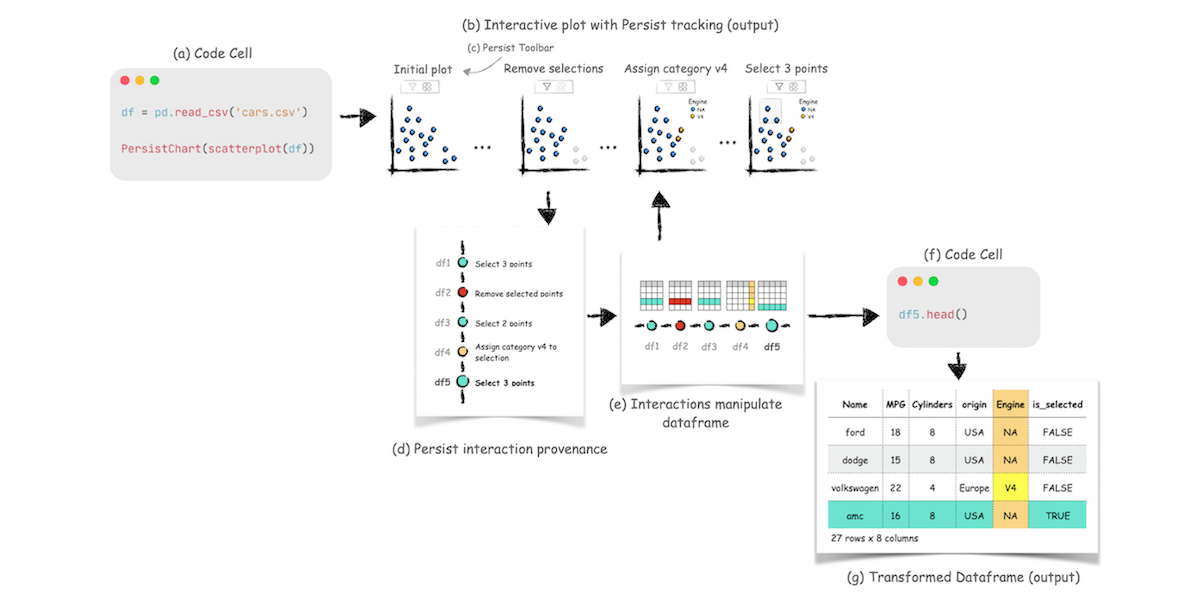
Abstract
Computational notebooks, such as Jupyter, support rich data visualization. However, even when visualizations in notebooks are interactive, they are a dead end: Interactive data manipulations, such as selections, applying labels, filters, categorizations, or fixes to column or cell values, could be efficiently applied in interactive visual components, but interactive components typically cannot manipulate Python data structures. Furthermore, actions performed in interactive plots are lost as soon as the cell is re-run, prohibiting reusability and reproducibility. To remedy this problem, we introduce Persist, a family of techniques to (a) capture interaction provenance, enabling the persistence of interactions, and (b) map interactions to data manipulations that can be applied to dataframes. We implement our approach as a JupyterLab extension that supports tracking interactions in Vega-Altair plots and in a data table view. Persist can re-execute interaction provenance when a notebook or a cell is re-executed, enabling reproducibility and re-use. We evaluate Persist in a user study targeting data manipulations with 11 participants skilled in Python and Pandas, comparing it to traditional code-based approaches. Participants were consistently faster and were able to correctly complete more tasks with Persist.
Citation
Kiran Gadhave,
Zach Cutler,
Alexander Lex
Persist: Persistent and Reusable Interactions in Computational Notebooks
Computer Graphics Forum (EuroVis), to appear, 43(3): doi:10.31219/osf.io/9x8eq, 2024.
BibTeX
@article{2024_eurovis_persist,
title = {Persist: Persistent and Reusable Interactions in Computational Notebooks},
author = {Kiran Gadhave and Zach Cutler and Alexander Lex},
doi = {10.31219/osf.io/9x8eq},
journal = {Computer Graphics Forum (EuroVis), to appear},
volume = {43},
number = {3},
year = {2024}
}
Acknowledgements
We would like to thank our interviewees for their time and participation in the study, and the Visualization Design Lab for the fruitful discussions and feedback.
Special thanks to Jake Wagoner for helping with the intent_inference library.
We gratefully acknowledge funding from the National Science Foundation (IIS 1751238 and CNS 213756).
Images
These images are not part of the original paper and licensed using CC BY 4.0. If you use these images, please cite the paper. Click on the images for full resolution.
